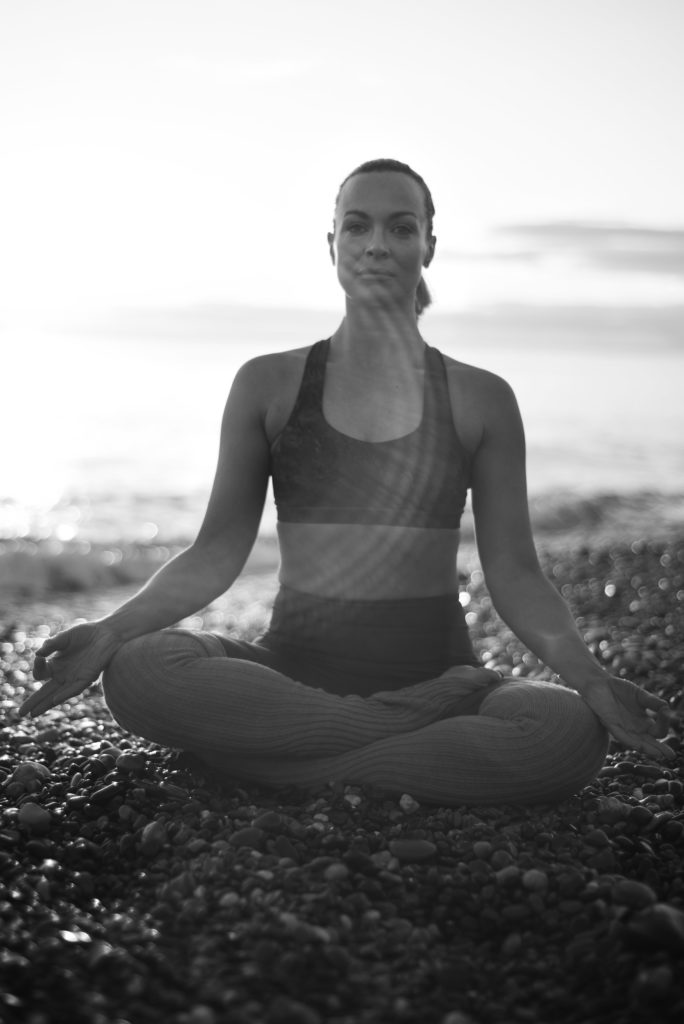
The first of a series by our wellbeing expert Niamh Deans on yoga philosophy and how it relates to modern day living.
Every thought we process affects us. Our cells pick up on our thoughts. Before I dived deeper on the path of yoga and learnt about yoga philosophy, I used to run my life more from my head than my heart. Through yoga, I have come to learn that I am not my thoughts. There are layers to my being and my mind is a tool in my life that I could not function without. It is not my enemy (with its sometimes crazy thoughts) but it does not control my destiny and I do not follow every thought from my mind stream. My thoughts are fleeting and I now allow them to come and go.
It was most enlightening and a huge relief for me to learn to view my mind in a new way. Patanjali's Yoga Sutras are a codified path outlining all of the elements that are included to find union of mind, body and spirit through the practice of yoga. Now when most people think of yoga they think of it in terms of the Asana (postural) practice. Asana practice is a very important part of yoga but it is not the whole picture. The asana practice develops an awareness of our physical body and links us with the breath and the prana (life force/energy) in the body. It also physically prepares the body for meditation. It is step three of the eightfold path codified by Patanjali in the Yoga Sutras. Patanjali’s Yoga Sutras codified a system that guide us on a pathway to achieving conscious living and move us towards a more enlightened existence.

Eight Limbs
The eight limbs of yoga are: Yamas (moral codes, things not to do); Niyamas (things to do or self-disciplines); Asana (postures); Pranayama (control of breath or ‘extension of the prana; prana meaning life force); Pratyahara (sense withdrawal); Dharana (concentration); Dhyana (meditation); Samadhi (illumination).
The first five limbs are regarded as the outer limbs of yoga – yama, niyama, asana, pranayama, and pratyahara and the remaining three are the internal limbs – dharana, dhyana and Samadhi.
In this first column on yoga philosophy, I am going to discuss the first two limbs on the path – the Yamas and Niyamas. The Yamas are non-violence, truthfulness, non-stealing, containment, and non-grasping.
Non-violence: Ahimsa
The first of the yamas is usually termed as non-violence. There is more to this than meets the eye. It is easy to see why non-violence is recommended as a moral guideline. The subtlety of this yama is that the meaning extends to non-violence towards ourselves, or to any direction in which ego or selfishness are the motivating factor in our impetus to act. Ahimsa needs to be looked at from where the intention of the action originates. It encompasses non-manipulation as well as non-imposition. When we begin to pay attention to our thoughts we might recognise that we have a mental stream of violence directed internally – in other words beating ourselves up mentally. This is turn affects our whole body and mind state. You know the kind of thing ‘You look fat in this’; ‘You are not up to the job’ and so on and so forth.
Advertised
Truthfulness: Satya
Here again, we are presented with a multi-faceted view of true truthfulness, that of pure intention. There are many levels upon which un-truths may rest. Self-study is paramount to understanding and reflecting on ourselves in these yamas. There is no room to kid ourselves in the practice of yoga. I find that once I read these yamas and have these truths mirrored back to me it is impossible to ignore their application in my life. Although in the passing present moments choices are made, be they based on learned behaviour or habit or instinct. Bringing awareness to how we act is the first step in moving away from these learnt behaviours.

Non-stealing: Asteya
Non-stealing refers to not taking what does not belong to you but also being responsible in how you engage with gifts that may be bestowed on you. Non-stealing might apply in a work setting where a person is over-reliant on someone else in the office effectively 'stealing' from them in other ways outside of the physical sense.
Containment: Brachmacharya
This is most usually understood in terms of sexual chastity. But another way to view this is as any distraction from dwelling in the true spirit self. This once again comes back to our guiding motivation. Containment is containing any elements of ourselves that distract from our spiritual journey. This can relate to sexual energy but also thoughts, emotions, feelings, any displays of energy that detract from our path. This has made me aware of where I might waste energies in my life. There have been times in my life when I have literally leaked out my energies and awareness of this yama has shown me how to pull back.
Non-grasping: Aparigraha
Of all the yamas, I am most intrigued by this one. Sometimes yoga has a way of illuminating something and a lightbulb literally comes on inside. I find it so interesting that this relates to non-grasping of physical possessions but also psychological material. Personally, I feel like this also overlaps with containment. If I am aware of my own containment then I am not grasping what is not rightfully mine. This also covers non-stealing. It also relates to non-accumulation of possessions, and so window shopping online which used to be a popular pastime of mine has now lost all of its appeal. I have so to speak, seen the non-shopping light. I feel like I have just become more aware of what is really important in life through studying the yamas and put more weight now on engaging with things that I feel are more important to me and my family. There are qualities I hold more dear that I feel stand to me much more and are much more precious than the illusory elements I up to now had a very different relationship with. I also care less what people think and can see my own judgements much more clearly for what they are or engage with where they come from.
Advertised
The Niyamas are purity, contentment, self-discipline (tapas), self-study (svadhyaya) and dedication to Ishvara (the oneness in everyone and everything/ the divine). Patanjali’s eight limbs of yoga provide us with a pathway to stemming the lures of and distractions of ourselves and the world so that we can stay true to our spiritual path, whatever that may be and wherever that may take us as an individual. In this ever increasingly busy and stressful world this framework for assessing myself and how I function within the world provides me with a great anchor in my life; my 'toolkit for life'. My next column will delve into this more along with some tips for anchoring yourself through the silly season's madness!
Niamh teaches mindful Yoga Flow and Yoga HIIT Fusion classes in the Samadhi Centre in Rathgar and also specializes in Corporate Yoga and Workplace Wellness. Check out Niamh @ www.NDYoga.ie and follow her on Instagram @ndyogadays and Facebook ND Yoga. Equiries to [email protected] or 087-2051790. Niamh’s schedule can be viewed on www.bookwhen.com/NDYoga.



